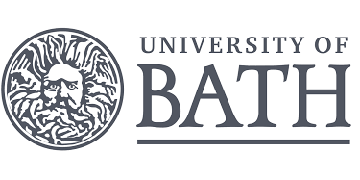University of Bath: Holograms and video projections boost grocery store sales but the simpler, the better – new research
Retailers should incorporate mixed reality promotions to increase sales, and keep it simple for the best results, according to new consumer research from the University of Bath.
Research carried out in a large grocery store, published in the Journal of Retailing, found that product holograms and video projections to enliven endcap shelves are effective at capturing attention and increase sales by up to 62 per cent relative to a regular endcap display.
The researchers tested simple mixed reality projections – images of pasta and a pot of sauce, with a moving price tag, projected on to the endcap – and then a more vivid, involved scenario where a picnic rug appeared to unroll on the shop floor and the ingredients were shown cooking ready to eat.
While the more vivid images better captured people’s attention – 31 per cent of shoppers versus 26 per cent of shoppers who noticed the simpler approach, they did not translate this advantage into sales.
“More vivid mixed reality projections are very effective at catching people’s attention, but we found that shoppers were spotting the promotion from a distance and by the time they reached the shelves their attention was already waning and they tended to walk on by,” said Professor Jens Nordfält, from the University’s School of Management.
“The simpler approach, which projected images of the products, and their price, caught people’s eye at the point of sale and many of them went on to put the items into their trolleys. In fact an additional 62 per cent in comparison to a traditional, plain endcap.”
Professor Nordfält, who is Co-Director of Bath’s Retailing and Contemporary Consumerism Research Lab, as well as running a franchise of Sweden’s ICA supermarket chain in Stockholm, says 80 per cent of shoppers entering a supermarket are looking for something to cook for dinner.
“We all know how to boil pasta but the strange thing is that when we see a packet of pasta at the supermarket we don’t easily envisage a meal, we just see a package among many other packages,” he says. “Yet when the retailer gives our imagination a helping hand and tees that packet of pasta up with a sauce, we start to see it as an ingredient. It makes it easier for us to envisage the end result and we feel inspired to buy it for dinner.”
Nordfält says mixed reality is still largely the domain of trade shows, or used to create artistic displays instore, but feels that the results of the study should inspire retailers to consider the new technology for everyday promotions.
“One of the exciting things about this study is that it shows you don’t have to go overboard when it comes to inspiring customers. A simple approach can be very effective. Communicating with your customers and inspiring them doesn’t have to be as expensive or complex as you might first think.”
Endcaps consistently yield an additional 2-300 per cent of sales in comparison to standard aisle placement, but the University of Bath study is the first to test the impact of mixed reality product projections on sales, and to identify the type of projections that have the most impact.
The research involved two in-store field studies to assess endcap impacts, conducted over three weeks in three grocery stores. The first study compared traditional endcaps with moderately vivid projections and highly vivid endcap projections: observing customer purchases when they passed the display; examining store-levels sales of the products on display; and assessing customer attention and mental involvement.
The second study investigated how adding scent or sound to moderately vivid projection affects attention and sales. While fragrance and music are common instore features, it is unusual for these to be tied to endcap promotions.
Dr Carl Philip Ahlbom, co-researcher from Bath, said: “Adding sound and scent to the mixed reality projections further boosted the number of people who paid attention to the display and the number who went on to make a purchase. The sounds that were added fitted the projection, such as the sizzling sound of cooking, and the effect was twice as powerful as the effect of scent. This may come as surprise to retailers who have adopted scent marketing.”
In-store endcap projections and their effect on sales is published in the Journal of Retailing, by Elis Schweiger (King’s Business School), Carl-Philip Ahlbom (University of Bath), Jens Nordfält (University of Bath), Anne Roggeveen (Babson College) and Dhruv Grewal (University of Bath).
The University is offering a new Strategic Retailing MSc which combines leading research from Bath with industry partners’ experience to develop the knowledge and skills leaders need to succeed in the rapidly changing retailing industry.

